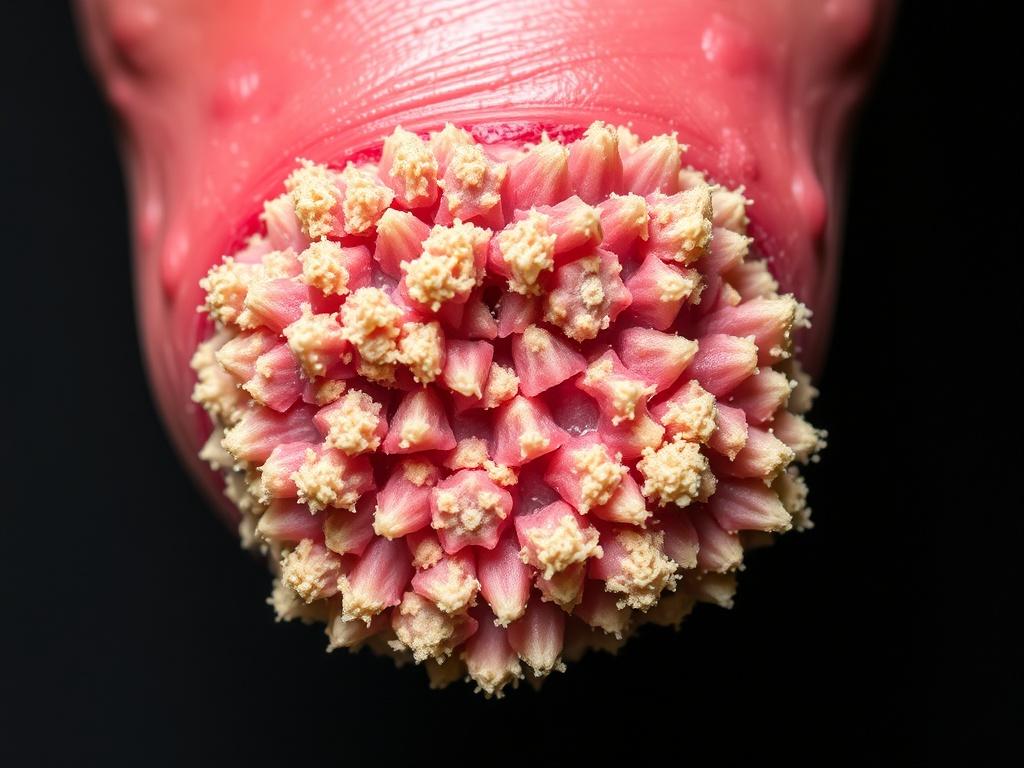Содержание
- What is aspergillosis?
- Who is at risk?
- Types of aspergillosis: how the disease presents
- Symptoms to watch for
- How aspergillosis is diagnosed
- Treatment approaches and management
- Preventing exposure and reducing risk
- Complications and prognosis
- Diagnosis and management summarised: a quick reference table
- Living with aspergillosis: practical tips and daily management
- Resistance and treatment challenges
- Research, future directions, and hopeful developments
- Common myths and frequently asked questions
- When to seek immediate care
SQLITE NOT INSTALLED
Aspergillosis sounds like an intimidating word, and for good reason: it describes a group of illnesses caused by Aspergillus, a common mold that lives almost everywhere. Most people never notice it, but for others—especially those with weakened immune systems—it can cause serious, even life-threatening disease. In this article we’ll walk through the nature of Aspergillus, the different ways it can hurt people, who is at risk, how it’s diagnosed and managed, and practical steps to reduce exposure and improve outcomes. I’ll keep this conversational and grounded, because understanding your risk and the signs to watch for can literally change the outcome for someone you care about.
Let’s begin with the basics and build from there. By the end you should have a clear picture of what aspergillosis is, how it behaves, and what modern medicine can do about it. I’ll also address common myths and questions so you can separate facts from fear. Whether you’re reading because of a diagnosis, caring for a vulnerable person, or just curious, this guide aims to be thorough, empathetic, and useful.
What is aspergillosis?
Aspergillosis refers to infections or allergic reactions caused by Aspergillus species, a genus of molds commonly found in soil, decaying vegetation, compost piles, and indoor air. These spores are tiny and lightweight; we inhale them all the time without issue. For most people, inhaled spores are cleared by the immune system or the lungs’ natural defenses. But in people whose immunity is compromised or who have certain lung conditions, Aspergillus can colonize airways, invade tissues, or trigger strong allergic responses.
The name covers a spectrum—from simple, non-invasive allergic reactions to invasive disease that can spread from the lungs to other organs. Because the presentations are so varied, doctors group them into categories like allergic bronchopulmonary aspergillosis (ABPA), chronic pulmonary aspergillosis, aspergilloma (a fungus ball), and invasive aspergillosis. Each has different causes, symptoms, and implications for treatment.
The culprit: Aspergillus species
Aspergillus comprises many species, but a few are most commonly linked to human disease. Aspergillus fumigatus is the usual suspect in invasive disease. Aspergillus flavus, Aspergillus niger, and Aspergillus terreus are also implicated in various infections. These molds are opportunistic—meaning they generally take advantage of weakened defenses rather than attacking healthy tissues.
The fungus reproduces by producing vast numbers of spores (conidia) that float freely. When conditions are right—dampness, warmth, organic material—Aspergillus thrives. This environmental ubiquity is why exposure is common, making host susceptibility the critical factor that determines whether colonization or disease will follow.
Who is at risk?

Understanding who is vulnerable helps target prevention and early detection. For many people, Aspergillus spores are harmless background noise. For others, they can trigger severe disease.
- People with weakened immune systems: Those undergoing chemotherapy, bone marrow or organ transplants, or receiving high-dose corticosteroids or other immunosuppressive drugs are at significantly increased risk of invasive aspergillosis.
- People with chronic lung diseases: Conditions like chronic obstructive pulmonary disease (COPD), bronchiectasis, or previous tuberculosis can create damaged airways where Aspergillus can colonize or form a fungal ball.
- People with allergies or asthma: Allergic forms such as ABPA are more common in people with asthma or cystic fibrosis, where inhaled spores can trigger an exaggerated immune response.
- Hospitalized patients: Construction or renovation near hospitals, inadequate air filtration, and long hospital stays—especially in intensive care—can increase nosocomial exposure and risk for vulnerable patients.
- Others: Diabetes, poorly controlled, and some genetic immune disorders can also increase susceptibility.
Risk is not binary but exists on a spectrum. Older age, prolonged hospitalization, and co-existing infections (like viral pneumonia) can further raise the stakes. Identifying at-risk people early is key, because early recognition and management improve outcomes.
Types of aspergillosis: how the disease presents
Because Aspergillus can behave in different ways, clinicians describe several distinct clinical entities. Here is an overview to help you understand the differences.
Allergic bronchopulmonary aspergillosis (ABPA)
ABPA is an allergic reaction to Aspergillus colonizing the airways. It most commonly affects people with asthma or cystic fibrosis. Symptoms often include worsening wheeze, coughing, brownish mucus plugs, and fleeting lung infiltrates on imaging. ABPA is an immune-driven condition—treatment typically focuses on controlling inflammation as well as reducing fungal load in some cases.
Aspergilloma (fungus ball)
An aspergilloma, or fungus ball, develops when Aspergillus grows inside a pre-existing lung cavity (often from healed tuberculosis or emphysema) and forms a dense clump of fungal filaments. People with an aspergilloma may have cough or cough up blood (hemoptysis). Some remain symptom-free. Treatment may be observation, antifungals, or surgery depending on symptoms and risks.
Chronic pulmonary aspergillosis (CPA)
CPA is a slowly progressive infection that occurs over months to years, usually in people with some underlying lung disease. It can cause weight loss, chronic cough, fatigue, progressive lung cavities, and sometimes significant hemoptysis. CPA requires prolonged antifungal therapy and sometimes surgical intervention.
Invasive aspergillosis
Invasive aspergillosis is the most serious form. It occurs when the fungus penetrates lung tissue and can spread through blood vessels to other organs—brain, heart, kidneys, or skin. This happens mostly in people with severely weakened immune systems. Fever, pleuritic chest pain, cough, and shortness of breath are common early symptoms, but invasive disease can evolve rapidly and be fatal without prompt treatment.
Symptoms to watch for
Symptoms vary with the type of aspergillosis. Below is a broad list that captures common signs—if you or someone you care for is at risk, these are the symptoms that should prompt medical evaluation.
| Type | Common Symptoms | Red Flags |
|---|---|---|
| ABPA | Worsening asthma, cough, wheeze, brown mucus plugs, fleeting pulmonary infiltrates | Uncontrolled asthma, repeated lung infiltrates, steroid dependence |
| Aspergilloma | Chronic cough, occasional hemoptysis, sometimes no symptoms | Massive hemoptysis (can be life-threatening) |
| Chronic pulmonary aspergillosis | Chronic cough, weight loss, fatigue, mild fever, progressive cavities on imaging | Worsening respiratory function, severe hemoptysis |
| Invasive aspergillosis | Fever, chest pain, cough, shortness of breath, localized symptoms if spread to other organs | Rapid deterioration, organ dysfunction, persistent fever despite antibiotics |
If someone with severe immune suppression develops fever or respiratory symptoms, clinicians have a low threshold to investigate for invasive fungal infections, because early treatment can be lifesaving.
How aspergillosis is diagnosed
Diagnosis can be challenging because Aspergillus is everywhere, and a positive test doesn’t always mean disease. Doctors combine clinical context, imaging, microbiology, and sometimes tissue biopsy.
- Clinical evaluation: A careful history (risk factors, progression of symptoms) and physical exam are the starting points.
- Imaging: Chest X-rays and, more importantly, chest CT scans can reveal cavities, nodules, or the characteristic “halo” sign (an area of lung tissue surrounding a lesion) seen in invasive disease. CT is more sensitive than X-ray.
- Microbiology: Sputum cultures, bronchoalveolar lavage (BAL) fluid, or tissue cultures may grow Aspergillus. Because the organism is common in the environment, a positive culture needs to be interpreted within the whole clinical picture.
- Biomarkers: Tests for Aspergillus galactomannan and beta-D-glucan can suggest invasive disease when positive, especially from blood or BAL fluid, but they have limitations and false positives can occur.
- Serology: For allergic or chronic forms like ABPA or CPA, blood tests that detect specific Aspergillus antibodies (IgE or IgG) help confirm the diagnosis.
- Histopathology: Invasive disease is definitively diagnosed when fungal hyphae are seen invading tissues on biopsy.
Because no single test is perfect, clinicians synthesize all available information to reach a diagnosis. If you’re worried about false positives or negatives, discussing results with an infectious disease or pulmonary specialist can help.
Treatment approaches and management
Treatment depends on the type of aspergillosis and the person’s overall health. Options range from watchful waiting to long courses of antifungal drugs and sometimes surgery. The goals are to control symptoms, reduce fungal burden, prevent progression, and manage complications.
Antifungal medications
Azole antifungals (like voriconazole and itraconazole) are the backbone of therapy for many forms of aspergillosis. For invasive disease, voriconazole is often the first-line drug, while liposomal amphotericin B, isavuconazole, or echinocandins may be used in certain situations or when resistance is a concern. Chronic forms may need prolonged or even lifelong therapy. Antifungal drugs can have significant side effects and interactions, so safe prescribing requires careful monitoring.
Immune and supportive therapies
In ABPA, corticosteroids are commonly used to calm the allergic inflammation. In invasive disease, reversing underlying immunosuppression when possible improves outcomes—this might mean reducing steroid doses or adjusting chemotherapy timing, in close coordination with treating physicians. Supportive care—oxygen, fluids, treatment of secondary infections, and management of bleeding—is often essential.
Surgery
Surgery has a role in selected cases: removal of a symptomatic aspergilloma, resection of localized chronic disease, or repair of damaged lung tissue that bleeds. Surgery carries risks, particularly in those with poor lung function, so multidisciplinary planning is critical.
Duration of therapy
Duration varies widely: allergic disease may need months of therapy or intermittent courses; chronic disease often requires months to years of antifungals; invasive disease typically needs prolonged treatment, sometimes until immune recovery. Decisions are tailored individually based on clinical response, imaging, and laboratory markers.
Preventing exposure and reducing risk
Because Aspergillus is widespread, elimination is impossible. But sensible steps can reduce exposure and protect those at risk. Prevention focuses on environment control, hospital precautions, and minimization of additional risk factors.
- Environmental measures: Avoiding compost piles, damp basements, and high-exposure environments when immune-compromised can reduce exposure. Wearing an appropriate mask (e.g., N95) during unavoidable exposures may help, though airborne spores are ubiquitous outdoors.
- Indoor air quality: Controlling dampness, fixing leaks, and using HEPA filtration can lower indoor spore counts. Regular maintenance of HVAC systems and prompt remediation of mold are important in homes and institutions.
- Hospital precautions: For high-risk patients, hospitals use HEPA-filtered rooms, positive air pressure rooms, and restrict construction work near vulnerable wards to decrease airborne fungal exposure.
- Medication strategies: Clinicians may use antifungal prophylaxis in certain high-risk settings (for example, some bone marrow transplant recipients). This is an individualized clinical decision based on risk and local resistance patterns.
- Lifestyle: Good nutrition, careful glucose control in diabetes, and minimizing unnecessary immunosuppression help preserve immune defenses.
Prevention balances practicality and medical necessity; talk with a healthcare team about what measures make sense for a given individual’s level of risk.
Complications and prognosis

Prognosis depends heavily on the type of aspergillosis and the patient’s underlying health. Allergic forms generally have good outcomes when managed well. Chronic pulmonary disease can be debilitating and require long-term treatment. Invasive aspergillosis carries the highest mortality risk, especially in people with profound and prolonged immune suppression.
Complications can include:
- Massive hemoptysis from damaged blood vessels in the lung
- Spread to other organs (brain, heart, kidneys), leading to focal symptoms like headaches, seizures, or neurological deficits
- Respiratory failure in severe pulmonary involvement
- Drug toxicity and interactions from prolonged antifungal therapy
Early recognition, appropriate antifungal therapy, and multidisciplinary care improve the chances of recovery. Even when cure is not achievable, symptom control and quality-of-life measures can make a big difference.
Diagnosis and management summarised: a quick reference table
| Clinical Scenario | Key Tests | Typical Treatment |
|---|---|---|
| Asthma with worsening symptoms and fleeting infiltrates | Serum IgE, Aspergillus-specific IgE/IgG, chest imaging | Oral corticosteroids; consider antifungal therapy in recurrent cases |
| Chronic cough, weight loss, cavities on CT | Sputum culture, Aspergillus IgG, CT chest | Long-term azole antifungal therapy; evaluate for surgery |
| Cough, fever, chest pain in a neutropenic patient | Chest CT, BAL for culture/galactomannan, blood biomarkers | Prompt antifungal therapy (often voriconazole); consider ambulatory or ICU support |
| Fungal ball in a lung cavity | CT chest, sputum culture | Observation if asymptomatic; antifungals or surgical removal if bleeding or symptomatic |
Living with aspergillosis: practical tips and daily management
If aspergillosis is part of your life—either personally or within your household—some practical habits can help manage symptoms and prevent complications.
- Follow medical advice closely: Adherence to antifungal therapy and scheduled monitoring is important, because interruptions can lead to relapse or resistance.
- Monitor side effects: Antifungal drugs can affect liver function, interact with many other medications, and have visual or neurologic side effects in some cases. Regular lab tests and clear communication with prescribers help detect problems early.
- Know the warning signs: New or worsening breathlessness, chest pain, fever, or hemoptysis should prompt urgent medical review—especially in immunocompromised people.
- Manage comorbidities: Control of diabetes, heart disease, and other chronic conditions supports immune function and overall resilience.
- Stay updated: If you’re immunocompromised, ask your healthcare team about antifungal prophylaxis, vaccine status, and other protective strategies during high-risk periods.
Beyond medical care, emotional and social support matters. Chronic illness can be isolating; joining patient groups or connecting with others who have faced similar conditions can be helpful and informative.
Resistance and treatment challenges
One growing problem is antifungal resistance. Environmental use of azole fungicides in agriculture and widespread azole therapy have contributed to resistance in some Aspergillus strains. Resistance can limit treatment options and is a major concern for invasive disease management.
To confront resistance:
- Clinicians increasingly rely on susceptibility testing for culture isolates when available, to guide drug choice.
- Combination therapy and newer antifungal agents are being considered in certain situations.
- Public health efforts to monitor resistance patterns and prudent agricultural fungicide use are part of the broader response.
This is an evolving area of medicine; staying informed about local resistance trends and discussing concerns with infectious disease specialists is important for affected patients.
Research, future directions, and hopeful developments
Research into aspergillosis spans improved diagnostics, new antifungals, vaccine development, and better strategies to prevent hospital-acquired exposure. Some promising directions include:
- Faster, more specific diagnostic tests that reduce reliance on invasive procedures
- New antifungal drugs with different mechanisms of action to overcome resistance
- Improved antifungal stewardship and public health measures that reduce environmental drivers of resistance
- Better understanding of host immune responses, opening the door to immunomodulatory therapies that help patients clear infection without excessive toxicity
Progress is steady but measured—basic biology of fungi differs from bacteria, making drug development challenging. Still, investments in research and global surveillance are increasing, bringing incremental improvements to patient care.
Common myths and frequently asked questions
Let’s clear up some misconceptions that often cause unnecessary worry.
Is aspergillosis contagious?
No. Aspergillosis is not spread from person to person. Disease results from inhalation of environmental spores rather than transmission between people. However, high environmental spore counts can place multiple people at risk in the same space, especially those who are immune-suppressed.
Can I get aspergillosis from my house?
Homes with dampness or visible mold can have higher indoor spore counts, but casual exposure typically poses little risk to healthy people. Those with weakened immune systems should take extra precautions, remediate mold, and consult healthcare teams about any suspected exposures.
Are antifungal medicines safe long-term?
Many antifungals can be used safely long-term with careful monitoring, but they have potential side effects and drug interactions. Regular blood tests and medication reviews are essential. Never stop or change antifungal therapy without medical advice.
Does a positive sputum culture always mean disease?
No. Because Aspergillus is common in the environment, it can colonize airways without causing disease. Doctors interpret cultures in the context of symptoms, imaging, and other test results.
When to seek immediate care
Aspergillosis can be an urgent problem if someone is immunocompromised or has signs of invasive disease. Seek prompt medical attention if a high-risk person develops:
- New fever, especially not responding to antibiotics
- Worsening shortness of breath or chest pain
- Sudden coughing up of blood
- Neurological changes such as severe headache, vomiting, or seizures
Early evaluation and treatment markedly improve outcomes in invasive disease.
Conclusion
Aspergillosis covers a wide spectrum of disease caused by a common environmental mold; most people inhale its spores without harm, but in vulnerable individuals it can cause allergic reactions, chronic lung disease, or severe invasive infection. Understanding the types of aspergillosis, recognizing risk factors and warning signs, and seeking timely medical evaluation are essential. Diagnosis often requires a combination of imaging, laboratory tests, and clinical judgment, and treatment ranges from observation and corticosteroids for allergic forms to prolonged antifungal therapy and sometimes surgery for chronic or invasive disease. Preventive measures—improving indoor air quality, using protective strategies in hospitals, and maintaining overall health—can reduce risk. Progress in diagnostics and antifungal therapies continues, offering hope for better outcomes. If you or someone you care for may be at risk, discuss concerns with a healthcare provider who can advise on testing, prevention, and personalized management.





